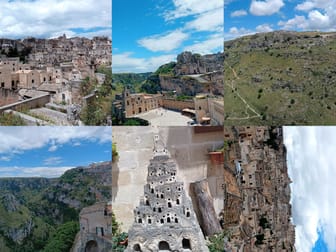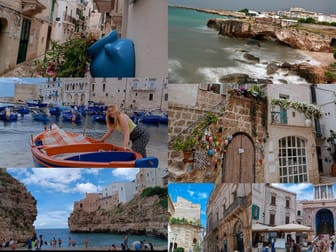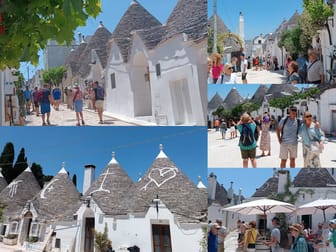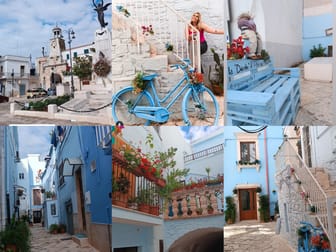Full Lecce and Otranto Guide (Puglia, Italy)
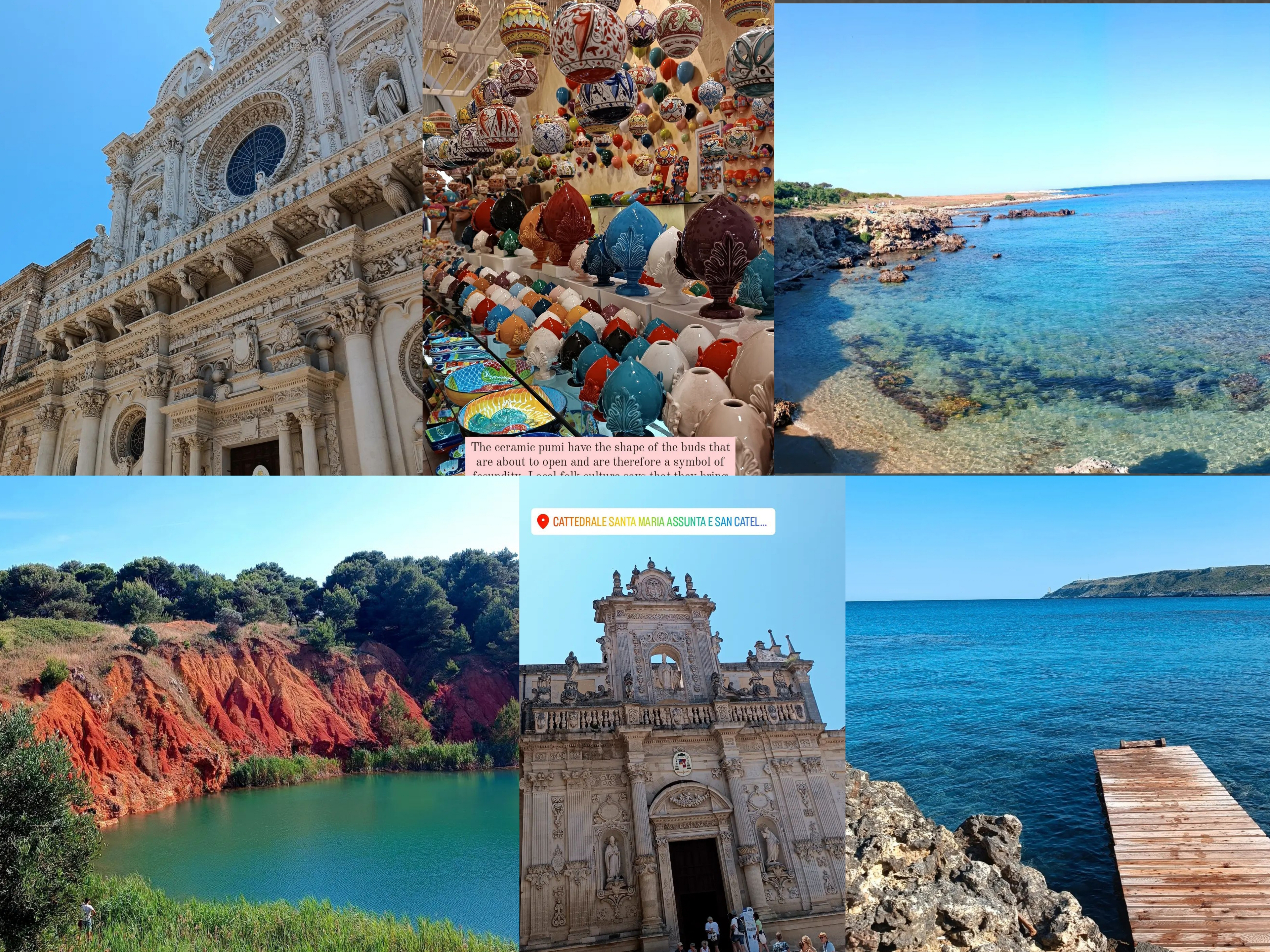
You can easily transform this into a two-day trip. I traveled from Bari to Lecce by train, then took a bus from Lecce to Otranto, where I rented a bike to explore Cava di Bauxite and the local beaches. If you have more time, consider booking accommodation in Lecce to fully enjoy everything that southern Italy has to offer.
Lecce: The Florence of the South
Lecce, often referred to as the "Florence of the South," is a captivating city located in southern Italy on the Salentine Peninsula, forming the heel of the Italian Peninsula. With a history that spans over two thousand years, Lecce is renowned for its stunning Baroque architecture, which has earned it this affectionate nickname. The city’s unique architectural style is a testament to its rich cultural heritage and artistic legacy, characterized by intricate facades, elaborate churches, and captivating public squares.
One of the distinguishing features of Lecce is its local limestone, known as "Lecce stone." This soft and easily workable material has been used extensively for sculptures and architectural embellishments, further contributing to the city’s artistic reputation. In addition to its architectural prowess, Lecce serves as an important agricultural hub, particularly in olive oil and wine production, and has developed into a center for ceramics.
A Brief History of Lecce
Lecce, known as Lupiae during Roman times, boasts a history of over two thousand years. Founded by the Messapii, it became a significant Roman city, featuring a theater and an amphitheater. After the fall of the Western Roman Empire, Lecce endured sackings by the Ostrogoths but regained Roman control in 549 AD. The city flourished under the Norman conquest in the 11th century, becoming an important fief in the Kingdom of Sicily. By the 15th century, Lecce emerged as a cultural hub, enriched by Baroque architecture starting in the 1630s. Despite challenges such as the plague of 1656, Lecce thrived, and its strategic location played a vital role during World War II, making it a significant site for military operations. Today, Lecce is celebrated for its stunning architecture and vibrant cultural scene.
WHAT TO SEE? (check the map)
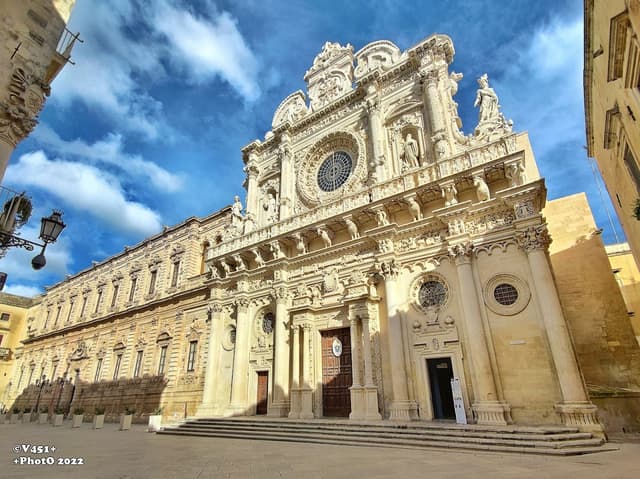
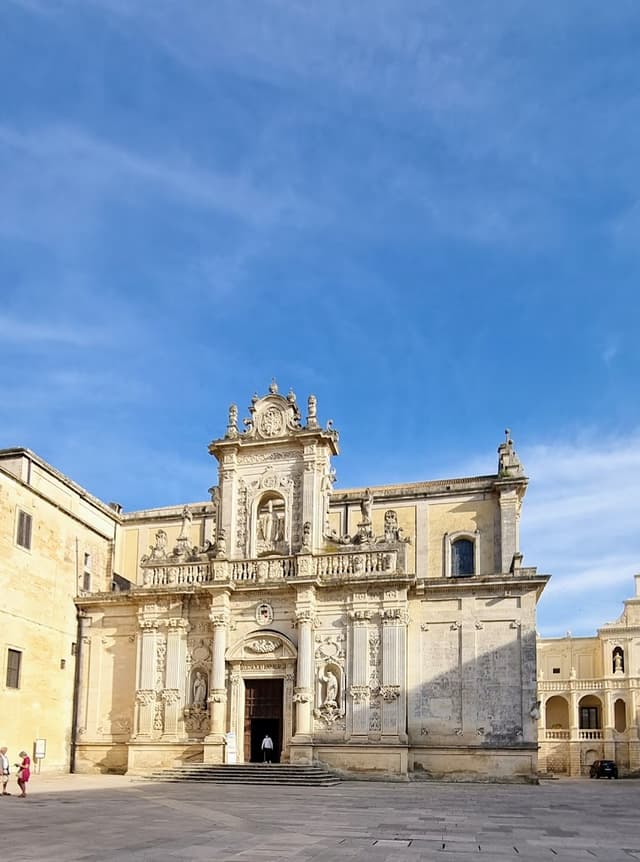
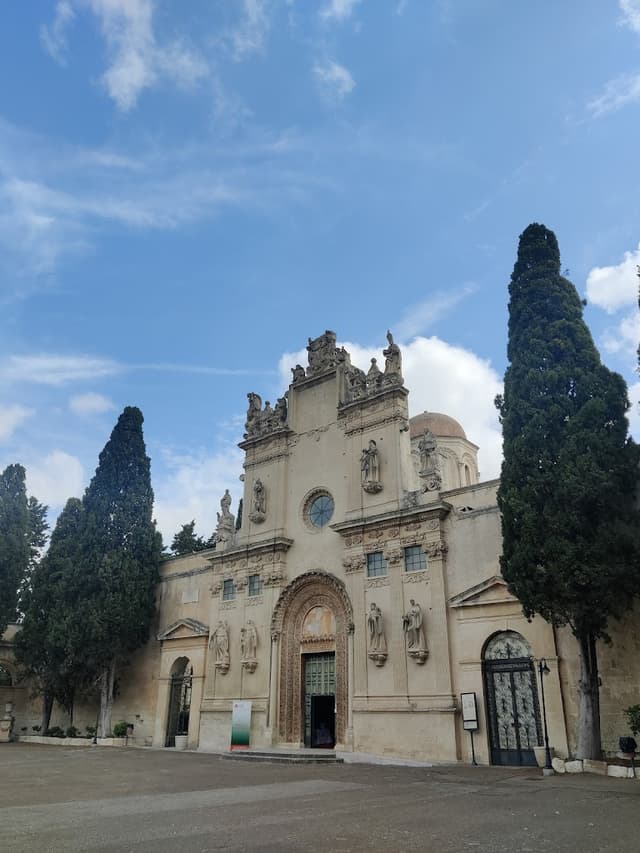
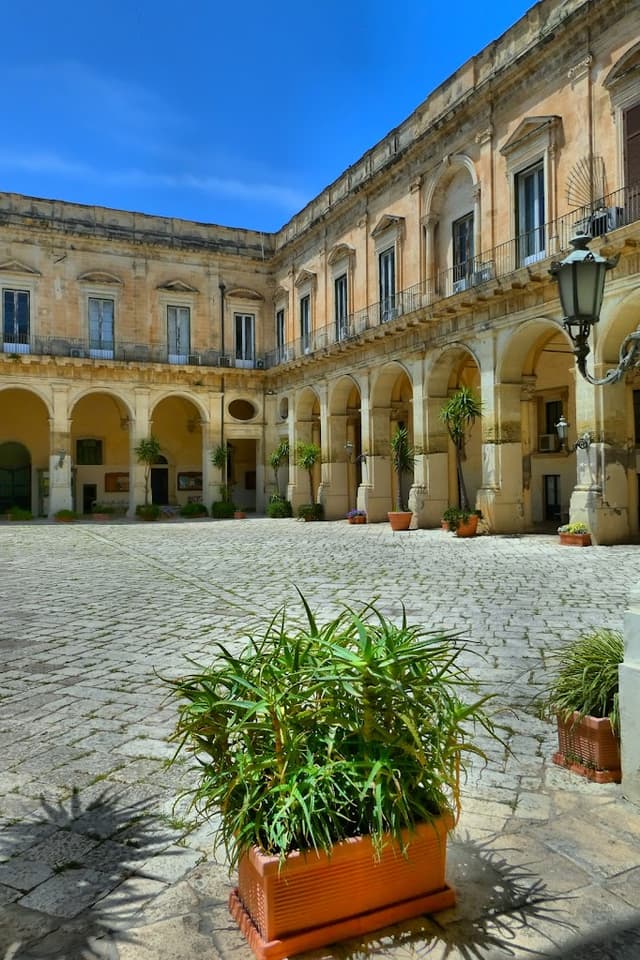
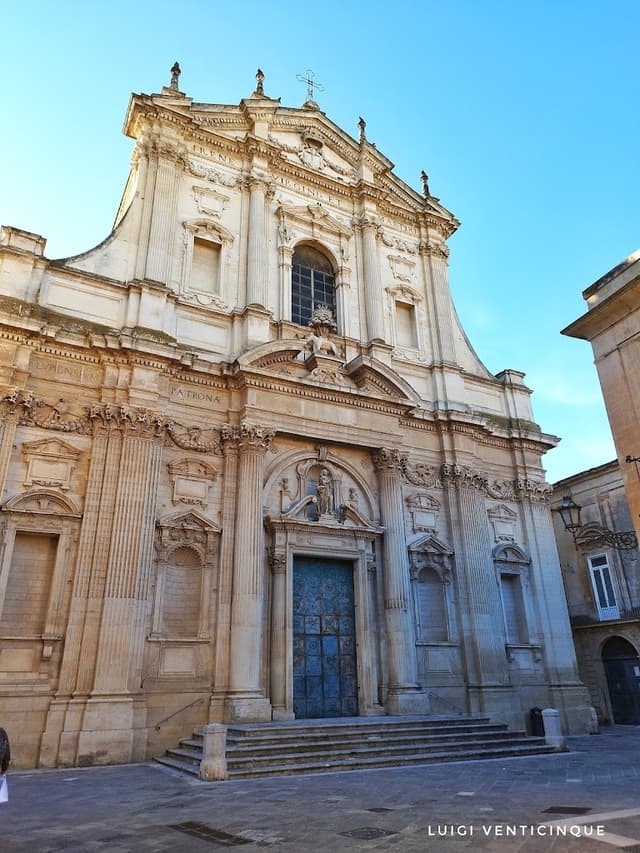
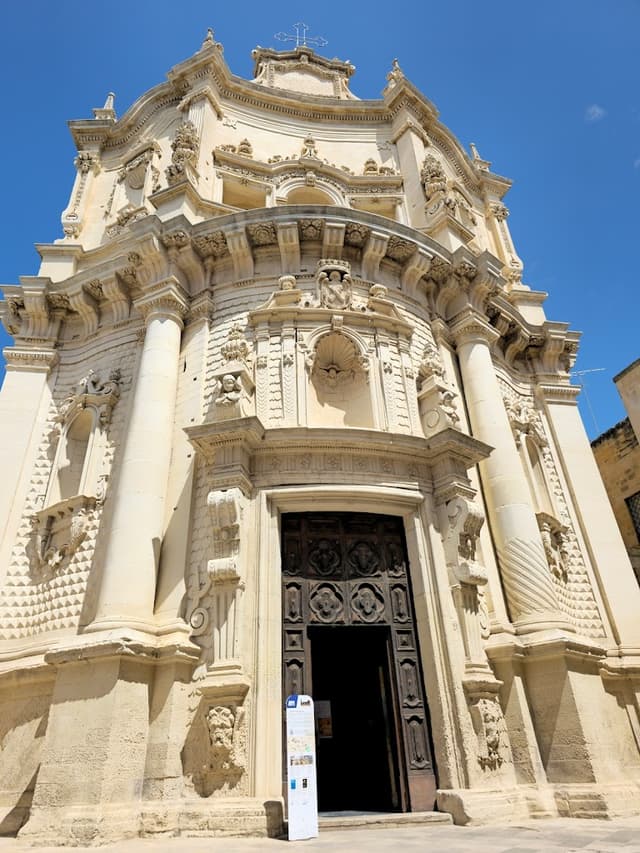
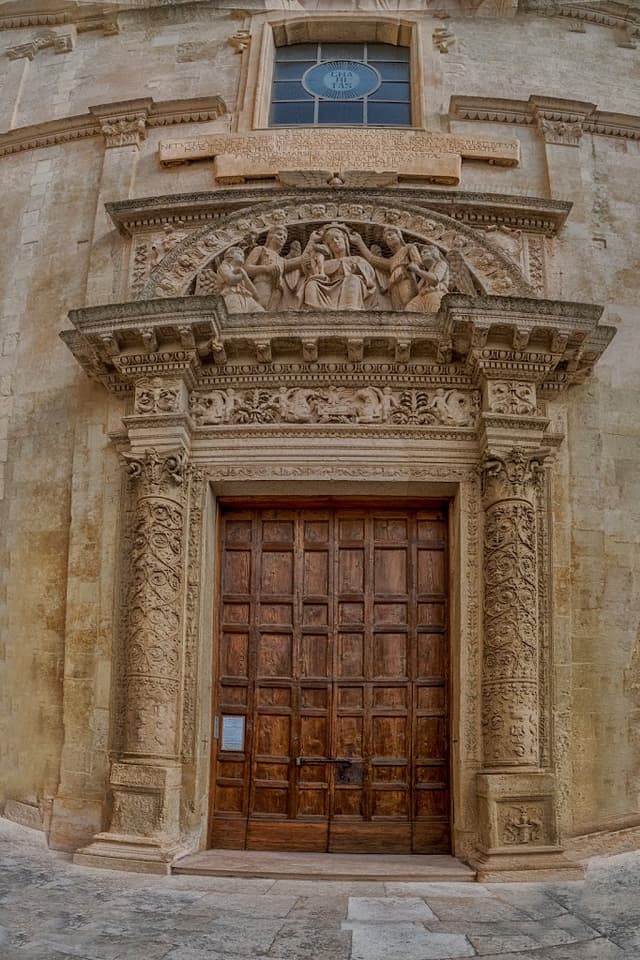
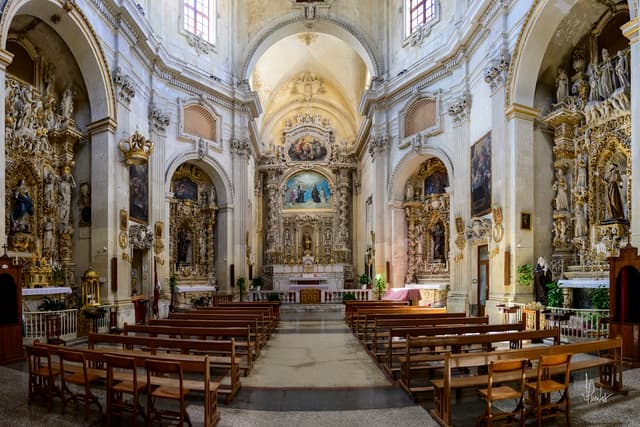
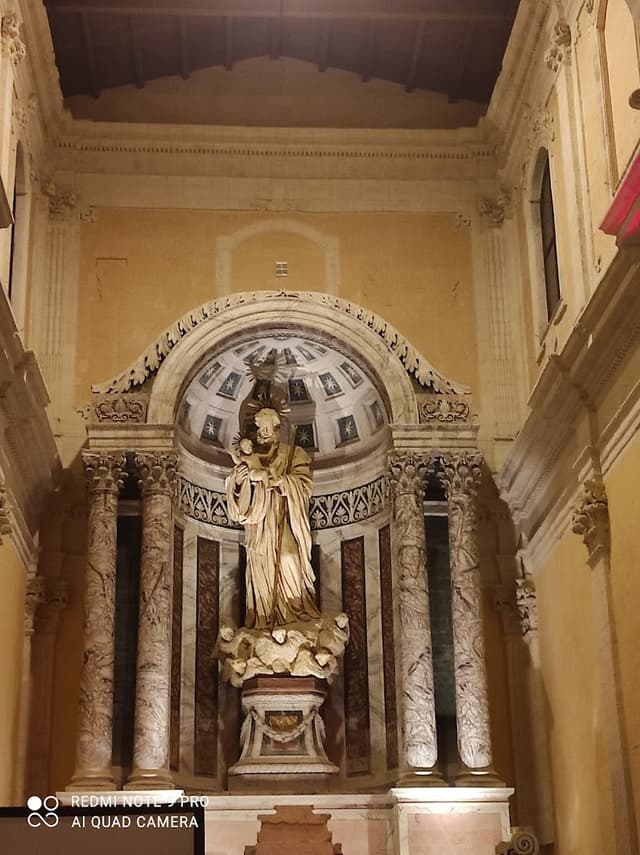
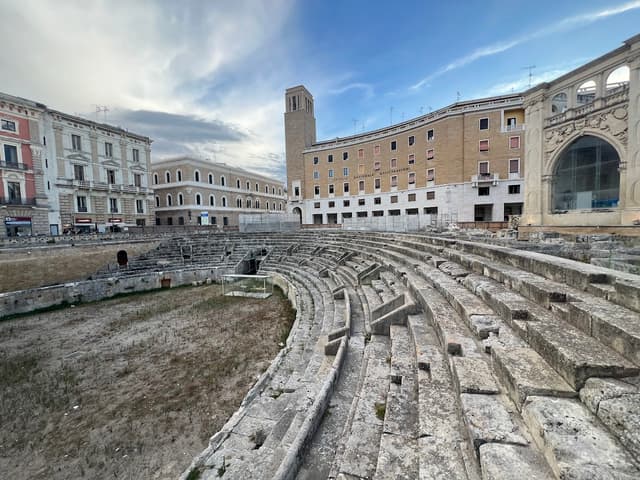
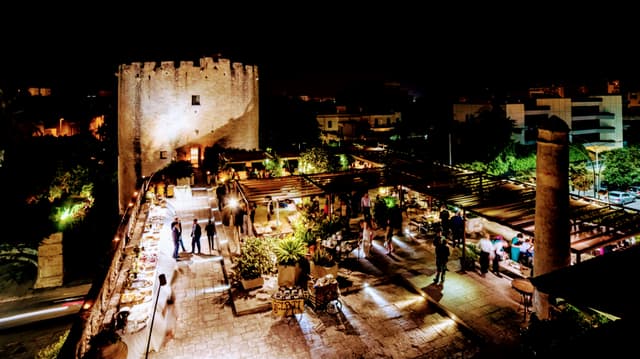
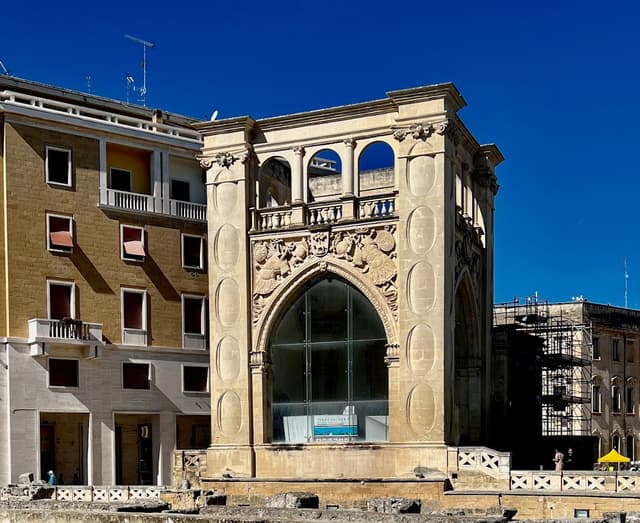
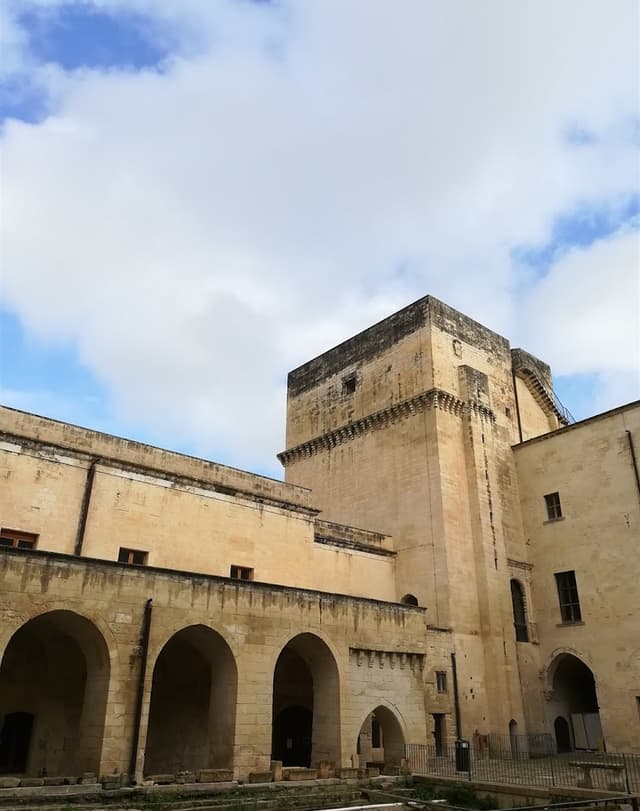
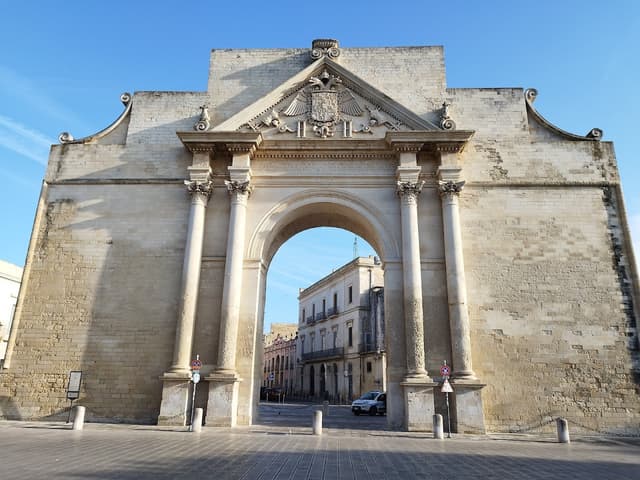
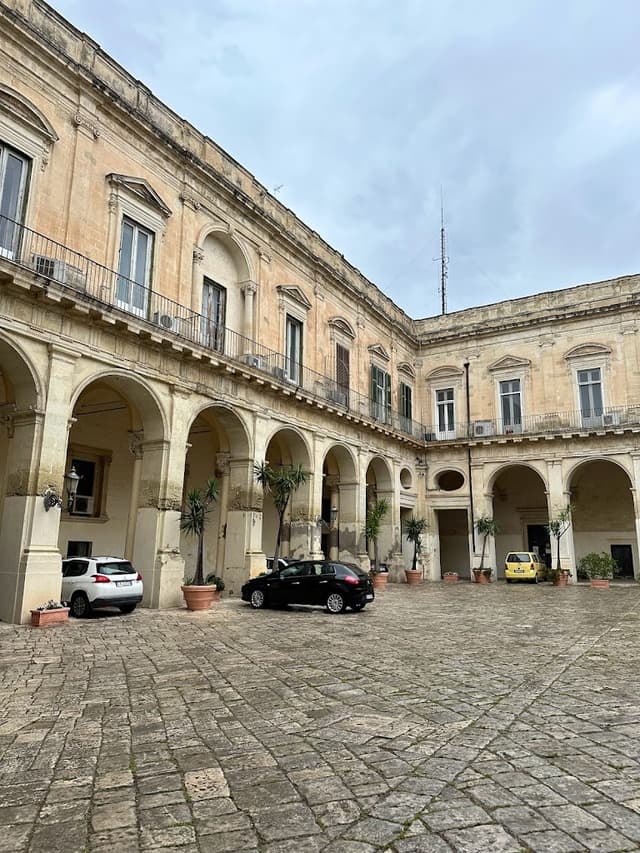
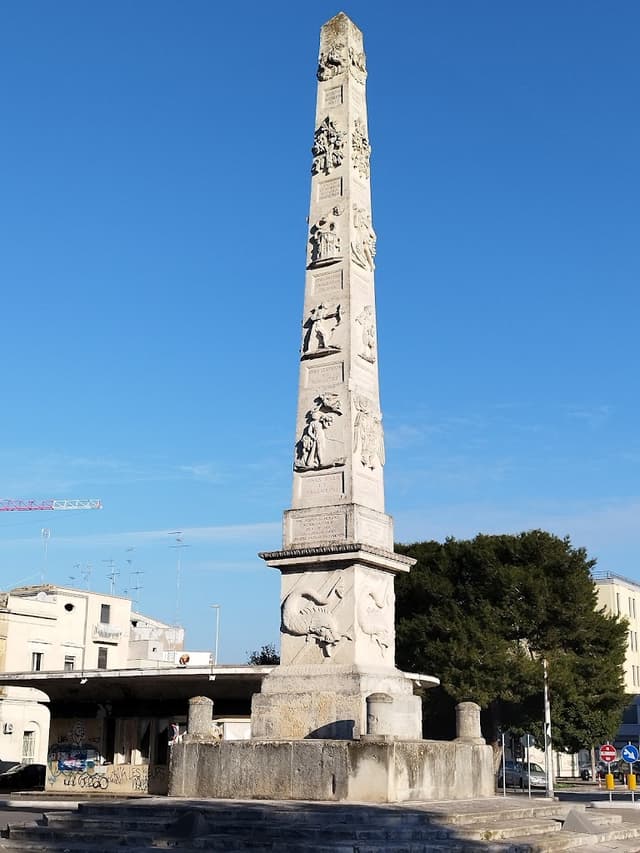
After exploring Lecce, it’s time to head to Otranto. I didn’t create a separate guide for this because one day is truly enough to enjoy both destinations!
From the location linked below, you can catch a bus to Otranto. The bus departs every few hours, so be sure to check the timetable on Trenitalia and purchase your tickets in advance!
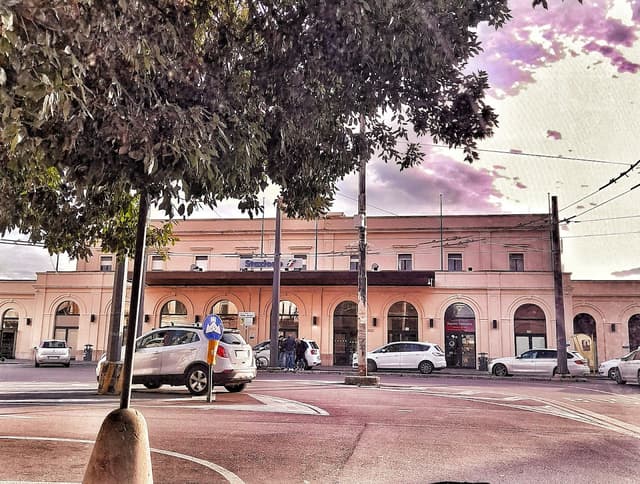
About Otranto:
Otranto, situated on the eastern coast of Italy’s Salento Peninsula, is not only a picturesque seaside town but also one of the most historically rich and geologically fascinating areas in Puglia. Its strategic position along the Adriatic Sea, near the Strait of Otranto, has long made it a key port connecting Italy to Albania and the broader Mediterranean world. Otranto’s appeal extends beyond its beautiful coastal views—this ancient town is also part of the natural and historical treasures of the region, offering visitors a unique blend of history, architecture, and geology.
Geologically, Otranto is located in an area where the rugged Adriatic coast meets the fertile lowlands of Salento. The surrounding region is characterized by its limestone formations and karstic features, contributing to the formation of caves and sinkholes that have shaped its unique landscape over time. This distinctive geology has created natural wonders like the famous Cava di Bauxite.
Main Attractions in Otranto
Otranto Cathedral (Cattedrale di Otranto)
Consecrated in 1088, this cathedral is one of Otranto’s most iconic landmarks. It features stunning mosaic floors dating back to the 12th century, depicting biblical scenes and mythical creatures. The bones of the Martyrs of Otranto, who were killed during the Ottoman siege in 1480, are displayed in the cathedral.
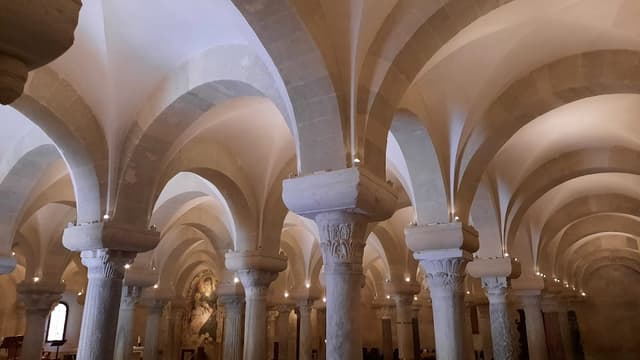
Aragonese Castle (Castello Aragonese)
Built between 1485 and 1498, this medieval fortress offers visitors a glimpse into Otranto’s defensive history. The castle’s walls, towers, and moat are well-preserved, and it often hosts cultural exhibitions and events.
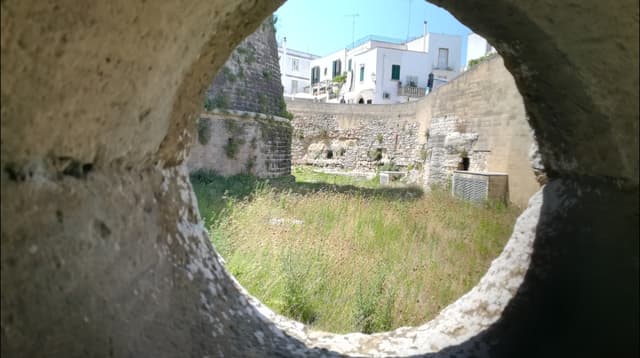
Church of San Pietro (Chiesa di San Pietro)
This small Byzantine-style church is famous for its beautifully preserved frescoes that date back to the 10th century. It’s a fine example of Byzantine art in southern Italy.
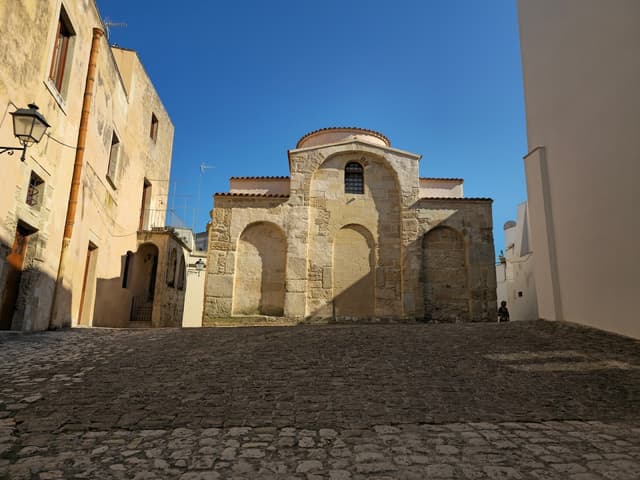
Port of Otranto
Otranto’s charming harbor is a great place to enjoy a seaside stroll and soak in the views of the Adriatic Sea. It’s also the closest port to Albania, which historically made Otranto an important link between Italy and the Eastern Mediterranean.
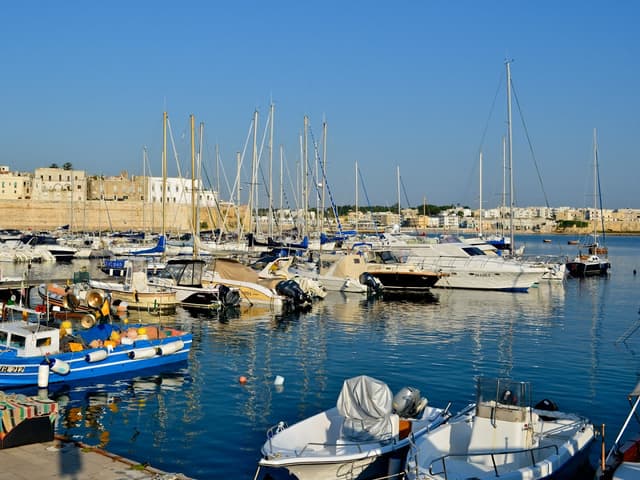
Torre Santo Stefano
Located just a few kilometers from the town, this ancient watchtower offers panoramic views of the coastline and is part of the region’s coastal defense system.

Orte Beach
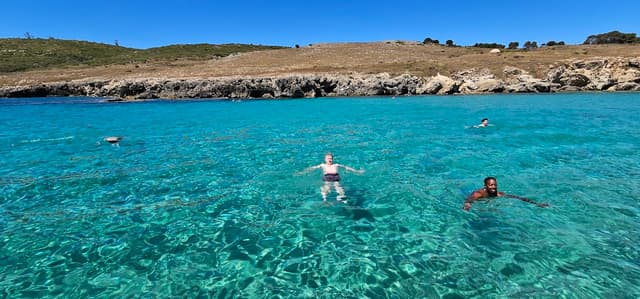
Baia dei Turchi
A beautiful sandy beach with crystal-clear waters, Baia dei Turchi is named after the Turkish invaders who once landed here. It is part of a protected nature reserve, making it an ideal spot for those who enjoy nature and pristine beaches.
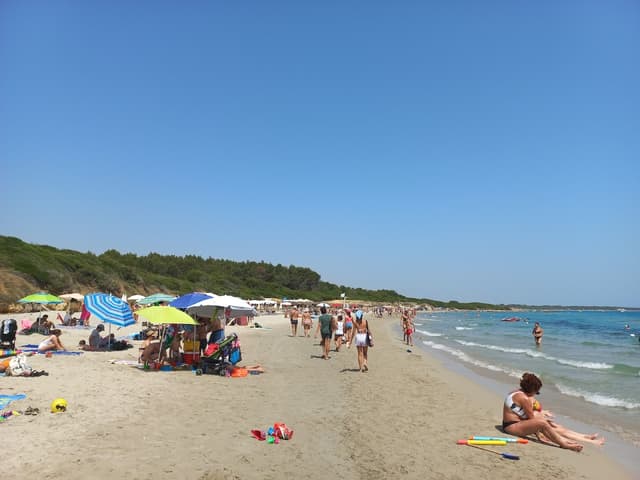
Zinzulusa Cave
Located a short drive from Otranto, this impressive karstic cave is one of the most famous in southern Italy. It features stunning stalactites and stalagmites and is a popular spot for guided tours.
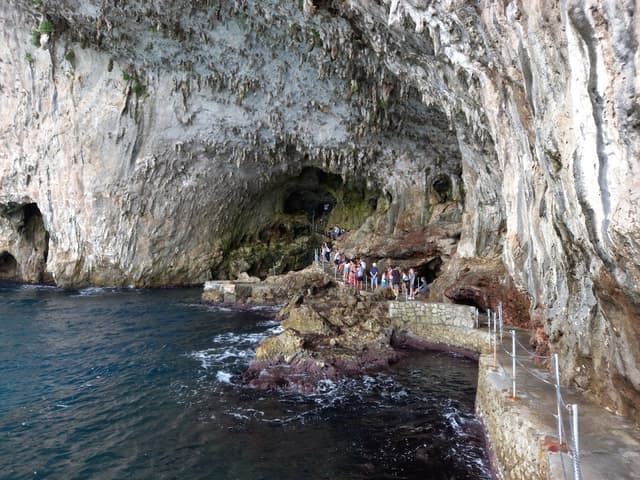
Bauxite Cave of Otranto
The Cava di Bauxite, or Bauxite Cave of Otranto, is one of the area’s most remarkable geological attractions. Located just 5 kilometres south of Otranto, this former bauxite quarry was mined from the 1940s to the mid-1970s. Bauxite is a reddish-brown rock rich in aluminium oxides and is the primary ore used in aluminium production. When the quarry was abandoned, nature took over, transforming it into a breathtaking landscape that now features an intense emerald-green lake, formed by groundwater seeping into the pit.
The vivid contrast between the red quarry walls and the green vegetation around the lake creates an otherworldly atmosphere, often compared to the surface of Mars. This alien-like landscape is now a popular hiking destination and one of the most photogenic spots in the Salento region. Despite its stunning beauty, the Cava di Bauxite remains relatively undiscovered by mass tourism, making it an ideal spot for those seeking off-the-beaten-path experiences.
A Visit to the Cava di Bauxite
The quarry is open to the public, though not widely advertised. Nearby beaches like Orte Beach and Porto Badisco are easy to reach on foot or by car. I rented a bike in Otranto for just 10 euros a day (July) —perfect for getting around, but be sure to bring plenty of water!
If you head down from Cava di Bauxite towards the sea, you'll come across stunning, uncrowded beaches that are truly breathtaking! Take your time and soak it all in. While I managed to explore everything in just one day, with the long summer days, you could easily spread it out over two days and enjoy it at a more relaxed pace. Prices are low, the locals are friendly, and the natural beauty is simply stunning. I can't wait to return!
Check out also my other guides for more Puglia inspiration:
The home for unique & authentic travel
